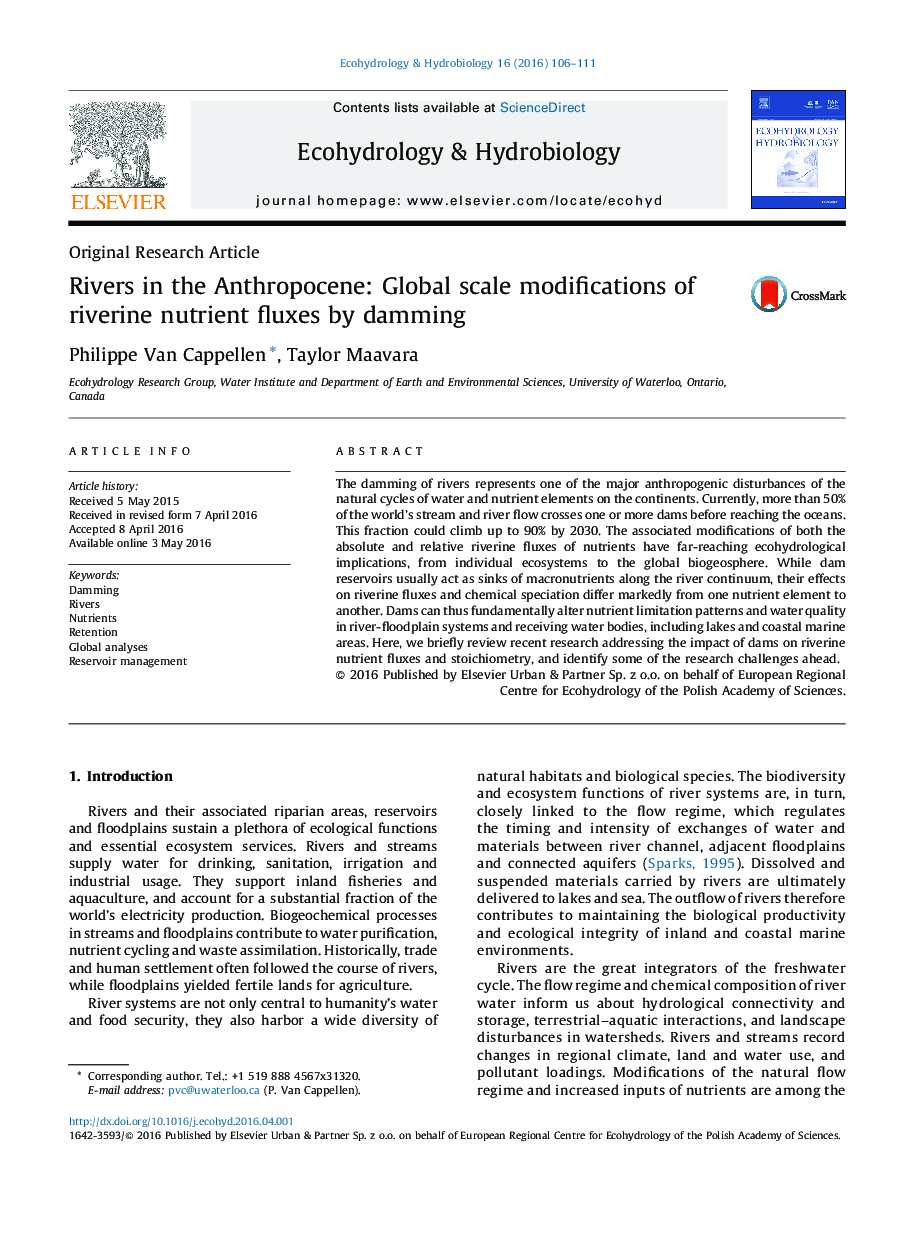| کد مقاله | کد نشریه | سال انتشار | مقاله انگلیسی | نسخه تمام متن |
|---|---|---|---|---|
| 4387950 | 1305068 | 2016 | 6 صفحه PDF | دانلود رایگان |
The damming of rivers represents one of the major anthropogenic disturbances of the natural cycles of water and nutrient elements on the continents. Currently, more than 50% of the world's stream and river flow crosses one or more dams before reaching the oceans. This fraction could climb up to 90% by 2030. The associated modifications of both the absolute and relative riverine fluxes of nutrients have far-reaching ecohydrological implications, from individual ecosystems to the global biogeosphere. While dam reservoirs usually act as sinks of macronutrients along the river continuum, their effects on riverine fluxes and chemical speciation differ markedly from one nutrient element to another. Dams can thus fundamentally alter nutrient limitation patterns and water quality in river-floodplain systems and receiving water bodies, including lakes and coastal marine areas. Here, we briefly review recent research addressing the impact of dams on riverine nutrient fluxes and stoichiometry, and identify some of the research challenges ahead.
Journal: Ecohydrology & Hydrobiology - Volume 16, Issue 2, May 2016, Pages 106–111
